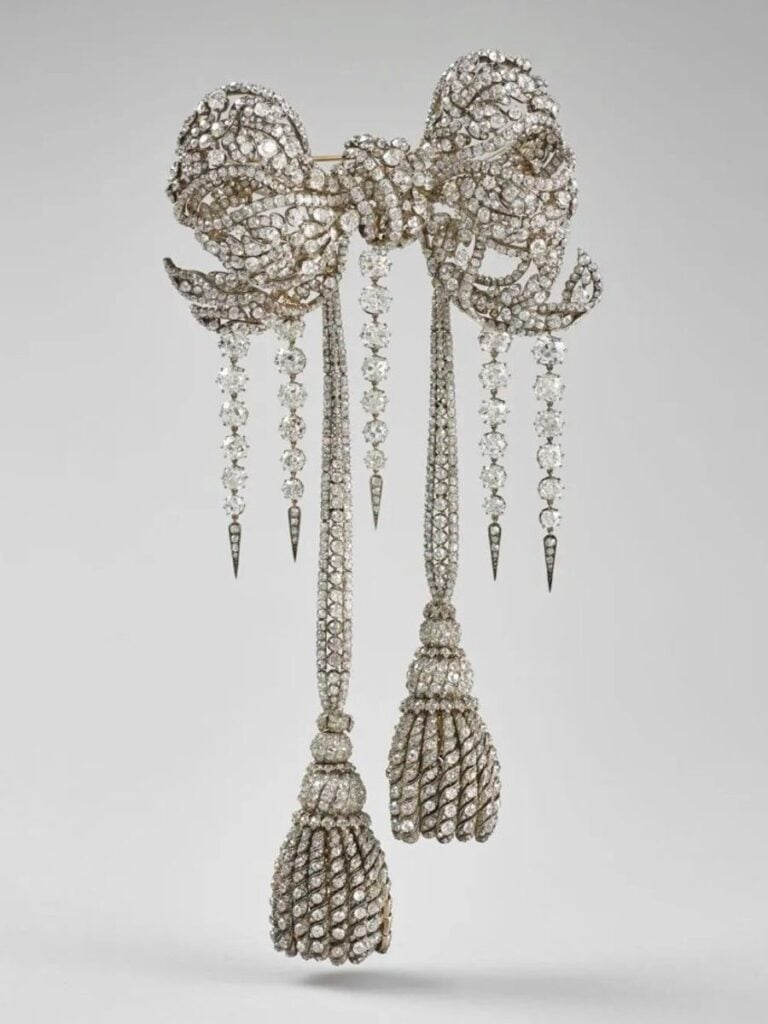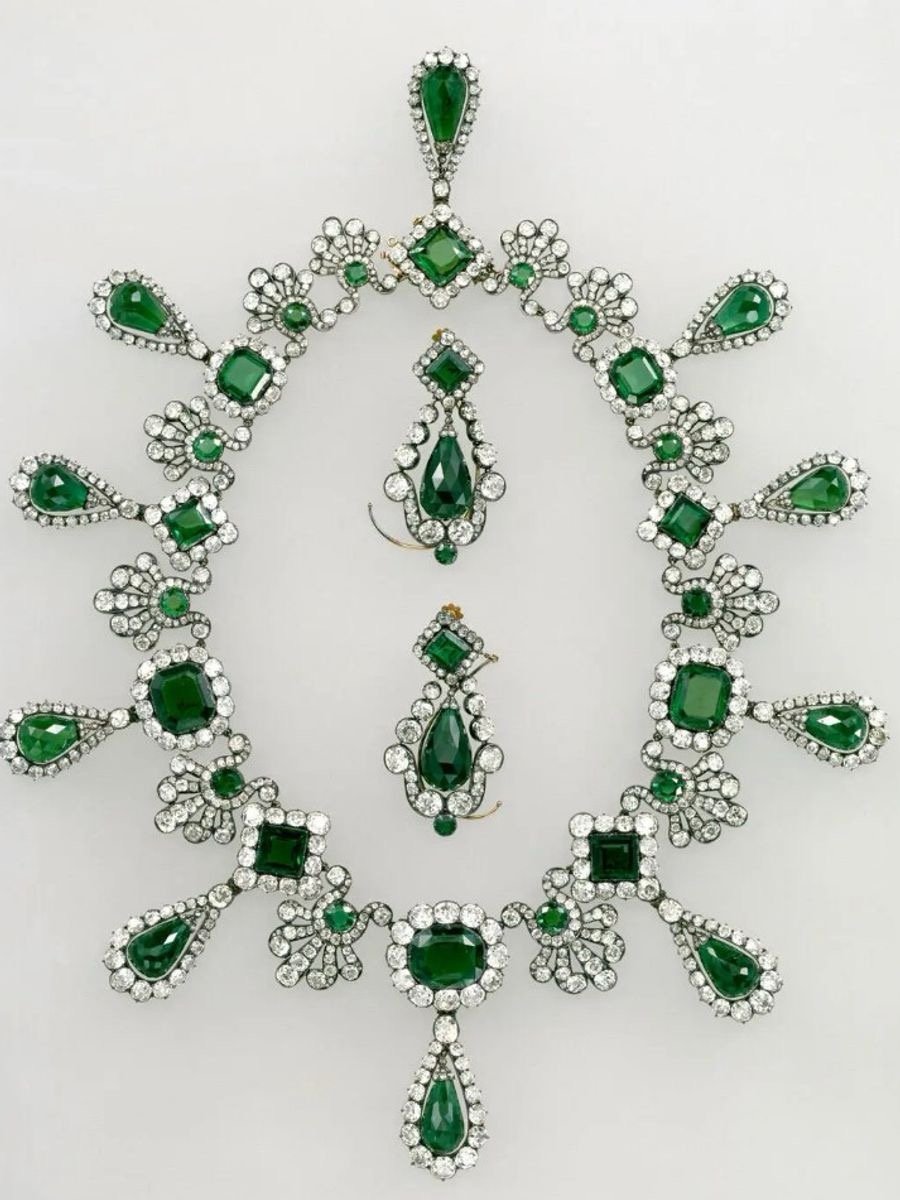Eight priceless pieces from the French Crown Jewels were stolen in a brazen daylight heist at Paris’s Louvre Museum, with thieves completing the audacious raid in just seven minutes before escaping on motorbikes.
The gang of masked robbers used a basket lift mounted on a lorry to break into the world-famous museum at 9.30am on Sunday, smashing display cases in the Apollo Gallery and fleeing with jewellery once belonging to Napoleon and the French Empresses.
A ninth item was stolen but recovered at the scene, identified as the broken crown of Empress Eugénie, wife of Napoleon III, which was found damaged outside the museum walls.
French Culture Ministry Names Stolen Treasures
The French Culture Ministry has officially identified the eight stolen items as:
- Tiara from the set of Queen Marie-Amélie and Queen Hortense
- Necklace from the sapphire set of Queen Marie-Amélie and Queen Hortense
- Earring from the pair belonging to the sapphire set of Queen Marie-Amélie and Queen Hortense
- Emerald necklace from the Empress Marie Louise set
- Pair of emerald earrings from the Empress Marie Louise set
- Brooch known as the “reliquary brooch”
- Tiara of Empress Eugénie
- Large corsage bow brooch of Empress Eugénie
The recovered ninth item was confirmed by French publication Le Parisien as the crown of Napoleon III’s wife, Empress Eugénie, which was found broken outside the museum.

Four-Minute Operation Executed With Military Precision
Culture Minister Rachida Dati described the operation as the work of “professionals”, telling French television TF1 it was “a four-minute operation carried out without violence”.
Footage of the raid showed the thieves “don’t target people, they enter calmly in four minutes, smash display cases, take their loot, and leave”, she said.
“No violence, very professional,” Dati added, highlighting the calculated nature of the carefully planned heist.
Interior Minister Laurent Nuñez confirmed it was “a major robbery” involving intruders who entered via a basket lift using a platform mounted on a lorry.
How the Robbery Unfolded
The criminals gained access through the Seine-facing facade of the sprawling museum, where construction work is currently taking place.
It remains unclear whether the gang brought their own equipment or took advantage of machinery already present due to the ongoing building works.
Nuñez said the robbers broke a window and cut through panes “with a disc cutter” before targeting the Galerie d’Apollon, home to a selection of the French Crown Jewels.
The number of robbers has not been officially confirmed, but Nuñez told France Inter that three or four thieves gained entry to the museum.
French daily newspaper Le Parisien, citing police sources, reported the suspects wore hoods and were carrying “small chainsaws.
Two suspects were inside the museum whilst a third stayed outside, according to Le Parisien.

Thieves Made Off With Jewels of “Inestimable Value”
Nuñez said the stolen items were jewels that “have genuine heritage value and are, in fact, priceless”.
The Interior Ministry emphasised the items have “inestimable heritage and historical value” beyond any monetary valuation.
Forensic work is now underway and a detailed list of the stolen items has been compiled following the break-in, which took place between 9.30 and 9.40am (8.30-8.40am UK time).
Once inside, they made directly for the Galerie d’Apollon (Apollo Gallery), home to a selection of the French Crown Jewels, the interior ministry confirmed.
The robbers reportedly escaped with nine pieces of jewellery from the Napoleon and French Sovereigns display cases before fleeing on two motorbikes.
Police Find Equipment Left Behind at Scene
Police recovered substantial evidence left behind by the gang in their hasty departure.
Officers found two angle grinders, a blowtorch, gasoline, gloves, a walkie-talkie, a blanket and the damaged crown at the scene, according to reports.
The equipment suggests the gang came heavily prepared with industrial tools capable of cutting through reinforced glass and metal security fixtures.
The well-prepared nature of the operation indicates extensive planning, with the gang scouting the venue beforehand, Nuñez confirmed.
He added they cut window panes “with a disc cutter” before escaping “on a TMAX”, a type of Yamaha maxi-scooter.
Art Detective Warns of “Race Against Time”
Art detective Arthur Brand warned the heist represents “the theft of the decade”, with police having just one week to recover the items before they are destroyed.
“These crown jewels are so famous, you just cannot sell them,” Brand explained. “The only thing they can do is melt the silver and gold down, dismantle the diamonds, try to cut them. That’s the way they will probably disappear forever.”
He emphasised: “They [the police] have a week. If they catch the thieves, the stuff might still be there. If it takes longer, the loot is probably gone and dismantled. It’s a race against time.”
What is in the Galerie d’Apollon?
The Galerie d’Apollon is an enormous room on the upper floor of the Petite Galerie, which houses the French Crown Jewels as well as the royal collection of hardstone vessels, paintings, tapestries and medallions.
Rebuilt by King Louis XIV after a fire, it is home to three historical diamonds: the Regent, one of the most famous diamonds in the world, the Sancy and the Hortensia.
At 140 carats, the Regent is exceptional in terms of size, weight and purity. When it was found in India in 1698, it was the largest known diamond at the time.
Panic as Tourists Trapped Inside Museum
Social media users posted pictures and videos from inside and outside the building, with one showing people leaving in “total panic”.
One person on social media who said they were there reported a confused scene of police “running” near the museum’s famous pyramid “and trying to enter… from glass side doors but they were locked and they could not enter”.
“Everyone inside was running and banging on glass doors to get out, but could not open. Police and military police arrived,” they added.
A tour guide described hearing what sounded like “stomping” on windows as he led tourists through the Apollo Room, before hearing shouts from security guards to evacuate immediately.
Museum Forced to Close for Investigation
The Louvre, which is the world’s most popular museum and draws up to 30,000 visitors a day, said on social media that it was closing for “exceptional reasons”.
The museum welcomed 8.7 million visitors last year, with tourists from the United States making up 13 per cent of all guests, second only to the French.
Culture Minister Rachida Dati said there were “no injuries to report” and confirmed she was on site alongside museum teams and police.
The closure was necessary to preserve evidence and clues so investigators could work calmly, Nuñez explained.
Video footage showed confused tourists being ushered out of the iconic glass pyramid and surrounding courtyards as officers sealed gates and closed nearby streets along the Seine.
History of Louvre Break-Ins
This is not the first time thieves have targeted the museum.
In 1911, the Mona Lisa, now protected by bulletproof glass, vanished from its frame, stolen by a former worker who hid inside the museum and walked out with the painting under his coat.
It was recovered two years later in Florence, an episode that helped make Leonardo da Vinci’s portrait the world’s best-known artwork.
In 1983, two Renaissance-era pieces of armour were stolen and were only recovered in 2021, nearly four decades later.
The museum’s collection also bears the legacy of Napoleonic-era looting, containing 33,000 works of art, including antiquities, sculptures and paintings.
In addition to the Mona Lisa, its star attractions feature the Venus de Milo and the Winged Victory of Samothrace.
Investigation Continues
Authorities have launched a major investigation with forensic teams compiling evidence from the crime scene.
Nuñez expressed confidence in finding the perpetrators and recovering the stolen treasures before they are dismantled.
However, experts warn that without swift arrests, the priceless jewels may be broken down and their components sold separately, effectively erasing their historical provenance forever.
As the hunt for the thieves continues, the Louvre faces difficult questions about whether its security arrangements remain adequate for protecting irreplaceable cultural treasures in an era of increasingly sophisticated museum heists.
Follow for more updates on Britannia Daily



